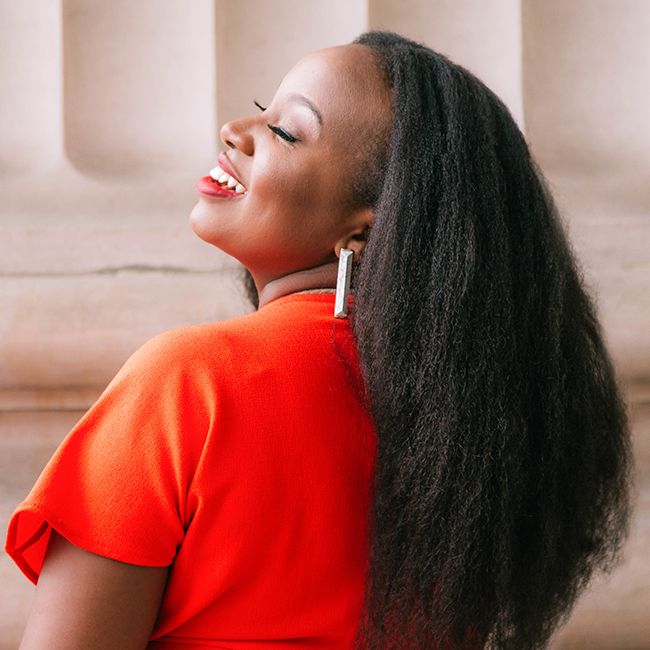I recently posted a video on my YouTube channel with photos of my blown out hair in celebration of my fifth natural hair anniversary. It received several thousand views and a lot of heated commentary and debate on whether my twenty-inch, kinky-curly hair was dry or simply sheen-less. The rage within the natural hair community and a simple Google search on shiny hair reveals many articles on how to make our curly hair shiny.
What after all is shiny hair and why is there an obsession with ensuring our hair matches this standard? Is sheen-free hair necessarily dry hair and on the other hand is shine indicative of healthy and moisturized hair?
Well, let’s begin with a few talking points:
The practice of greasing hair is deeply entrenched within the Black community
Prior to going natural, I solemnly believed that applying heavy pomades to my scalp would stimulate growth. You better believe that every Sunday, without fail, I’d douse my scalp in oils that made my hair glisten and shine. Nonetheless, my hair was prone to breakage and I didn’t see much health and length retention. I’m pretty sure I’m not alone. In Hair Story: Untangling the Roots of Black Hair in America, Ayana Byrd explores the roots of pervasive inter-racial prejudices while contextualizing how fads, such as the much-maligned Jheri Curl, become pervasive. Needless to say, this subject alone could make up an entire article, but what I mean to point out is the idea that curly hair should shine is one deeply rooted in our black culture.
Media has gone a long way in psychologically convincing us that healthy hair is shiny hair
A walk through beauty aisles will reveal how often shine is used to capture a shopper’s attention. Subliminal messaging employed over and over again may begin to sound like the truth and influence our perceptions of what is and isn’t considered healthy hair.
Now that we’ve considered a few poignant, societal factors that may influence our understanding of healthy and unhealthy hair, as far as shine is involved, I’d like to explore what physical factors influence the level of sheen on our hair.
The structure of hair
The shingle-like, outermost layer of the hair strand is called the cuticle. Depending on your hair’s natural porosity, you may find your cuticle is raised, tightly bound, or in between. If your hair is highly porous, it loses moisture easily and is likely to have less sheen, as uneven surfaces refract rather than reflect line. In addition, if your hair is curly, you may find that it naturally feels drier, because your scalp’s sebum encounters more friction as it travels down the hair shaft of coily hair.
Styling practices
Heat styling, permanent hair color, and poor styling practices compromise the health of one’s hair, leading to dryness.
As each head of hair is different, I’d encourage you to look into all the aforementioned factors when assessing whether or not your hair is dry or simply sheen-less. In addition, you may be able to look at the manageability and elasticity of your hair in order to understand whether or not it is healthy and moisturized. In other words, does your hair have a healthy protein-moisture balance? Does it snap or hyperextend when combed? Are you able to detangle it easily or does it feel dry and crunchy?
While this article may not have resolved the debate as to whether sheen-less hair is dry hair and shiny hair is healthy hair, I hope that it has at least given you some factors to consider when assessing your approach to this topic and more essentially to the health of your hair.
Feel free to leave us a comment down below with your thoughts!

